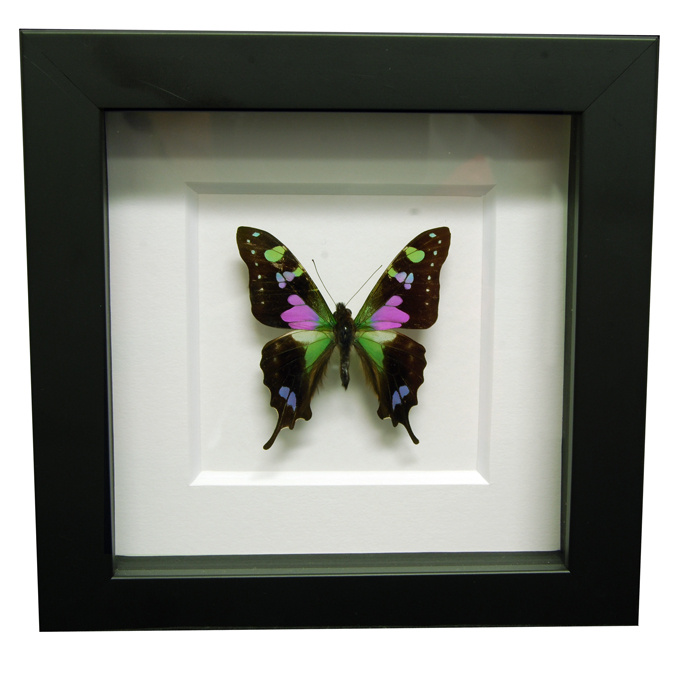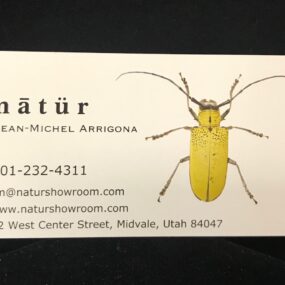Description
Dead Leaf Butterfly Frame showing a spread Specimen, and 2 closed specimens to show the incredible mimicry of a dead leaf.
You will receive this specimen or one like it. The frame measures 6 x 13 x 1″ deep. The mat will be one of the two layouts shown, and you will receive the frame shown, or one very similar to what is shown.
Kallima limborghi is a species of butterfly belonging to the Nymphalidae family. Like other species in the Kallima genus, it is known for its remarkable leaf-mimicking camouflage.
Key Details about Kallima limborghi:
- Appearance:
- Kallima limborghi has an appearance similar to that of other Kallima species, such as Kallima inachus, with wings that closely resemble the appearance of dead or dried leaves when closed. This camouflage helps it blend into its environment, making it difficult for predators to spot.
- The butterfly’s dorsal (upper) wings are brownish with patterns resembling veins and the rough texture of a leaf. When the wings are closed, it is very hard to distinguish the butterfly from a fallen leaf.
- When the wings are opened, they display more vivid colors, including blue and orange hues, similar to other Kallima species.
- Habitat:
- Kallima limborghi is found in Southeast Asia, particularly in regions like Malaysia, Thailand, and possibly some other parts of the Indochina Peninsula.
- The butterfly inhabits tropical forests and other wooded areas where it can rest on trees or on the forest floor, further enhancing its leaf-like disguise.
- Behavior:
- As with other Kallima butterflies, Kallima limborghi is known for its slow, erratic flight. When at rest with its wings closed, it remains virtually invisible, mimicking the appearance of a dead leaf.
- The butterfly is usually inactive during the day, remaining still and relying on its camouflaged appearance to avoid predators.
- Life Cycle:
- The larvae (caterpillars) of Kallima limborghi likely feed on plants, similar to other species of the genus. The exact host plants for Kallima limborghi are not always well-documented, but species like Piper are commonly used by Kallima larvae in general.
Camouflage Strategy:
- The leaf-like mimicry of Kallima limborghi is an excellent example of how evolution has shaped the species to evade predators. The shape, color, and texture of the butterfly’s wings serve to confuse predators into mistaking the butterfly for a piece of foliage.
Overall, Kallima limborghi is an exceptional example of natural mimicry and is admired for its extraordinary camouflage abilities.
Dead Leaf Butterfly Frame.






















